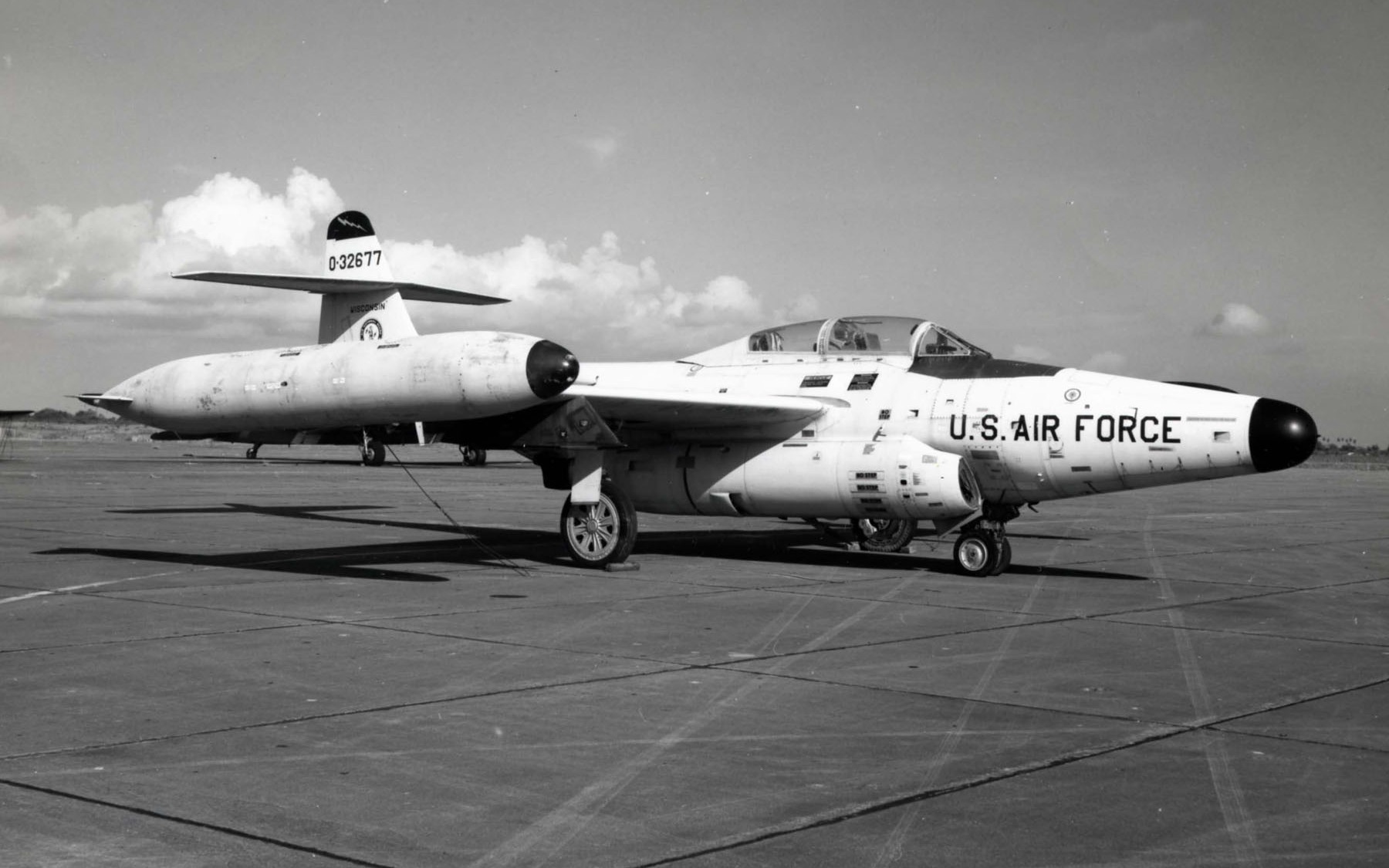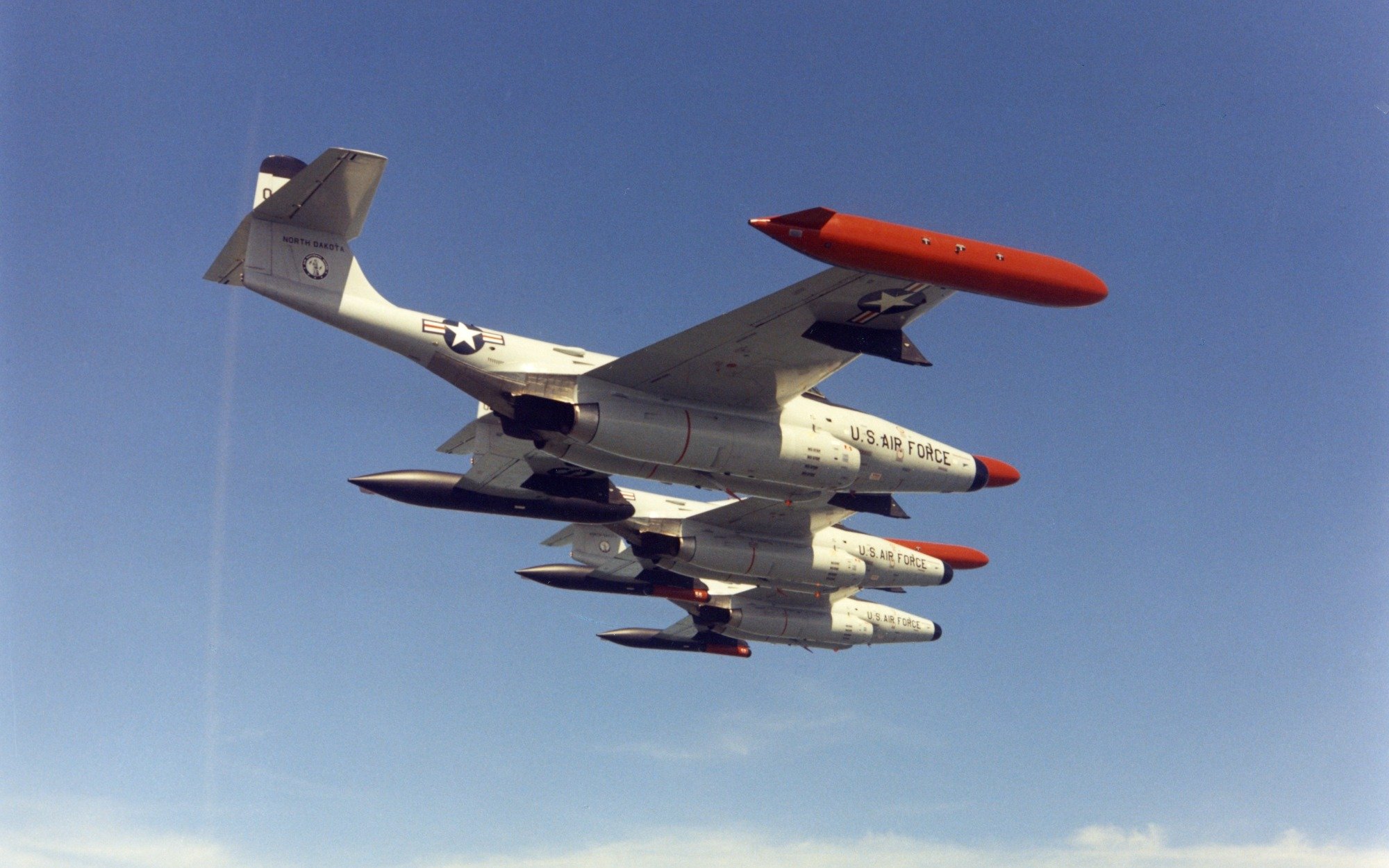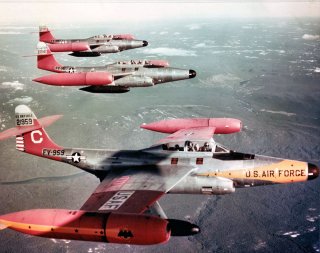The F-89 Fighter Fired 'Mini' Nuclear Bomb Rockets to Make Russia Freak
On July 19, 1957, the U.S. Air Force tested the MB-1 Genie, a nuclear air-to-air rocket, by launching it from an F-89J Scorpion over Yucca Flats, Nevada
Summary and Key Points: On July 19, 1957, the U.S. Air Force tested the MB-1 Genie, a nuclear air-to-air rocket, by launching it from an F-89J Scorpion over Yucca Flats, Nevada.

-This test, part of the Plumbob John series, demonstrated the Genie’s potential to destroy incoming bombers.
-Although never used in combat, the Genie and its deployment on various interceptors exemplified Cold War-era nuclear defense strategies. The Genie was retired in 1988 as advancements in missile technology rendered it obsolete.
F-89J Scorpion and the Nuclear Genie: A Cold War Tale
Starting in 1957, 350 F-89Ds were converted to the F-89J model capable of hefting two of the 820-pound Genie rockets, each under its prominent wingtip-mounted fuel tanks.
On July 19, 1957, five Air Force officers assembled in the open desert basin of the Yucca Flats of Nevada and glanced with nervous smiles up at a jet fighter flying high overhead. They were accompanied by a civilian defense photographer wearing a baseball hat named George Yoshitake.
The object of their consternation was a Northrop F-89J Scorpion, a two-seat radar-equipped air defense interceptor designed to shoot down Soviet nuclear bombers before they unleash their deadly payload on the United States.
The standard F-89D mode was confined to using kludgy batteries of unguided folding-fin rockets carried in wingtip pods. These would be automatically launched in a huge volley once the Scorpion’s radar gunsight determined it was aligned with a bomber target.
But the new F-89J flying overhead was carrying a very different and altogether deadlier payload—a nearly three-meter long rocket with a 1.5 kiloton nuclear W25 nuclear warhead in its tip. The rocket was designated MB-1 Genie, later renamed the AIR-2A, and popularly nicknamed the “Ding Dong.”
That’s why one of the accompanying jets was a WB-57D Canberra, a bomber converted to collect nuclear air-test samples.
At the conclusion of a count-down Captain Alfred Barbee triggered the weapon’s solid-fuel rocket motor, and the Genie short forth, propelled to over three times the speed of sound during the motor’s two-second burn.
Barbee, meanwhile, turned around and belted in the opposite direction.
In twelve seconds, the Genie had traversed six miles. The Hughes MG-12 fire control system onboard the F-89 transmitted a radio signal to the warhead’s fuse, which erupted in a fireball roughly one-tenth the strength of the Little Boy bomb dropped over Hiroshima.
You can see the blast as it was viewed from Ground Zero in this famous recording.
The photographer Yoshitake later recalled the observers standing on Ground Zero between 16,000 and 20,000 feet below sources differ) ecstatically exchanged celebratory cigars. The subsequent examination concluded they had not subsumed harmful effects.
Indeed, the test—part of the Plumbob John series o nuclear tests—was meant to reassure the public in the safety of the unique air-to-air nuclear weapons that would be deployed for the next three in air defense patrols of North American airspace. (All six present at the test were eventually diagnosed with cancer, though whether this was connected to the nuclear test is unclear.)
During World War II, fighters proved capable of inflicting heavy losses on massed bomber formations—but failed to stop them outright. But U.S. bombings on Hiroshima and Nagasaki demonstrated that it took only one bomber getting through to devastate an entire city with a nuclear weapon.
Short-range weapons seemed unlikely to suffice given this new reality, so the North American Air Defense Command (NORAD) placed its hope on blasting bombers out of the sky from a distance using beyond-visual-range missiles.
But precisely hitting an airplane at such a long distance was a technology still under development in the early 1950s. While the first AIM-9 Sidewinder missiles began to enter service in the mid-1950s, these were short-ranged weapons—and moreover needed to be fired from the rear of an enemy aircraft so their seekers could lock onto hot engine exhaust. This was not conducive to taking out incoming bombers approaching head-on in a timely fashion.

While early radar-guided air-to-air missiles were under development, the Douglas aircraft company proposed a different approach: why not simply launch an unguided rocket with a nuke aboard it in the general direction of enemy bombers? Then precision technology wouldn’t be necessary.
This was an approach akin to dropping a grenade in the pond in lieu of a fishing hook—in theory, fast and effective but potentially dangerous and messy, especially as it involved dispersing hundreds of nuclear weapons to interceptor units spread out across the United States, a security risk if there ever was one.
But in the 1950s, the ‘taboo’ against using nuclear weapon-use hadn’t fully taken shape. Military planners assumed that nuclear weapons large and small would be liberally employed for all kinds of purposes on every platform imaginable. The Army made “pentomic divisions” armed nuclear-capable gun and rocket artillery and even “nuclear bazookas” (actually, recoilless rifles) controlled by junior officers. Nuclear torpedoes were developed for use by submarines, and for use against submarines.
Thus a nuclear air-to-air rocket was not seen as beyond the pale, particularly as the stakes were so high. In theory, the Genie’s blast could potentially knock out entire bomber formations with a destructive radius of 300 meters, though in practice dispatching individual bombers from many different vectors was increasingly the norm by the late Cold War.
Starting in 1957, 350 F-89Ds were converted to the F-89J model capable of hefting two of the 820-pound Genie rockets, each under its prominent wingtip-mounted fuel tanks. But already, the F-89J was also capable of carrying four early AIM-4 radar-guided missiles it could employ if it didn’t want to go nuclear. The Scorpions were retired from the Air Force in 1959, but continued to serve with the Air National Guard units for another decade.
Meanwhile, by the time production ended in 1962/1963 over 3,150 Genies had been built. Douglas had even developed an improved model with a longer-duration motor, presumably extending a range, as well as non-nuke equipped training model (the ATR-2A).
The Genie was then adapted for use on supersonic F-101 two-seat interceptors and speedier single-seat F-106 Delta Darts. Both types could carry two Genies in internal weapons bays, as well as conventional AIM-4 missiles. As a safety measure, the nukes only armed once a sensor detected its carrier had attained higher speeds and altitudes.
Neither of these fighters ever fired a missile in combat, though they did test-fire practice Genie rockets with inert warheads as you can see in this stunning photo. The Genie was also considered for F-102 Delta Dart, F-104 Starfighter and British Electric Lightning interceptors, but didn’t make the cut.
The Genie was joined in service by another nuclear air-to-air weapon: the AIM-26B Falcon, a genuine air-to-air missile based on the AIM-4 with semi-active radar homing guidance and a smaller 250-ton-yield W54 warhead. However, the AIM-26B was withdrawn from service before the less complicated Genie in 1972.
The Genie also was operationally deployed (if not exactly owned or controlled) by the Royal Canadian Air Force in its CF-101 Voodoo interceptors starting in 1965. Technically maintained by the U.S. 425th Munitions Support Squadron, they could be released for use by the United States using a dual-key system should World War III break out.
The CF-101s and their nuclear Genie rockets were finally retired in 1984, though not before Canadian Voodoo jocks had a few closer encounters with Soviet Tu-95 reconnaissance bombers based in Cuba.
The Delta Dagger lasted only a few more years before it too was retired from Air National Guard units in 1988. With it, the last Genies were withdrawn from service. Advancements in air-to-air missile technology that would culminate in the AIM-120 Advanced Medium-Range Air to Air Missile removed what little rationale still existed for the Genie.
The Genie was a unique attempt to develop a defensive tactical nuclear weapon—and such it was issued widely to Air National Guard units across the country. Fortunately, there was never cause to detonate any more of the air-to-air rockets beyond the one tested over Yucca Flats in 1957.
Sébastien Roblin holds a Master’s Degree in Conflict Resolution from Georgetown University and served as a university instructor for the Peace Corps in China. He has also worked in education, editing, and refugee resettlement in France and the United States. This first appeared earlier and is being posted due to reader interest.
All images are Creative Commons or Shutterstock.
From the Vault
Russia Freaked Out: Why the U.S. Navy 'Unretired' the Iowa-Class Battleships
Battleship vs. Battlecruiser: Iowa-Class vs. Russia's Kirov-Class (Who Wins?)


